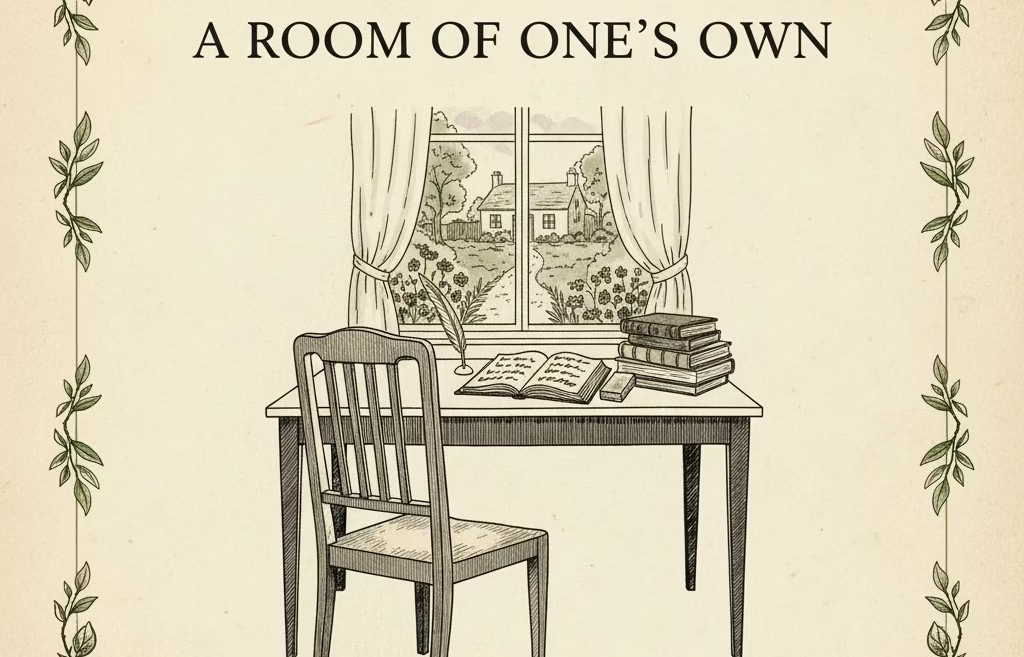Introduction
Henrik Ibsen’s
A Doll’s House, Henrik Ibsen’s extraordinary play remains one of the most exciting and frequently performed works in the modern theatre. When first performed in 1879, the play broke the mould and caused an earthquake in the world of the theatre. Its staunch attack on sociocultural customs, particularly those concerning marriage, women, and individualism, classified it as a subversive text. More than a century later, its themes are as pertinent and powerful, asking succeeding generations after generations critically to engage, reflect upon, and respond to them.
This in-depth exploration will explore the central themes of A Doll’s House placing them in historical context, analysing their dramatic execution, and highlighting their enduring relevance.
A DOLL’S HOUSE : PLOT OVERVIEW
A Doll’s House by Henrik Ibsen follows Nora Helmer, a seemingly cheerful wife and mother, as she navigates the constraints of her marriage and society. The plot centers on Nora’s secret: years earlier, she illegally borrowed money to save her husband Torvald’s life, forging her father’s signature. As the play unfolds, Nora’s actions are threatened with exposure by Nils Krogstad, a disgruntled employee at Torvald’s bank. The mounting pressure forces Nora to confront the reality of her marriage and her own identity. In a dramatic conclusion, Nora chooses to leave her husband and children, seeking independence and self-discovery—an act that shocked audiences and challenged 19th-century social norms. FULL TEXT
A DOLL’S HOUSE : MAJOR THEMES
The Sacrificial Role of Women in the play
One of the deepest themes in A Doll’s House is the sacrificial role of women. The women characters—Nora Helmer, Mrs. Linde, Anne-Marie—are depicted by Ibsen as victims of the small choice allowed women in a 19th century society. Forced to makes sacrifices in their personal lives and often sacrificing their own happiness and health to satisfy social and familial expectations.
Nora Helmer: The protagonist, Nora, epitomizes the sacrificial woman. Driven by love and desperation, she secretly secures a loan to save her husband’s life, forging her father’s signature—a criminal act in her society. Nora’s sacrifice is not celebrated as noble; rather, it is a tragic necessity forced upon her by a patriarchal system that denies women agency and autonomy.
Mrs. Linde: Nora’s childhood friend, Mrs. Linde, sacrifices her own happiness to marry for financial security. Her decision, made out of necessity rather than love, highlights the economic pressures that dictate women’s choices.
Anne-Marie: The Helmers’ nanny, Anne-Marie, relinquishes her own child to work and support herself. Her story, though less prominent, underscores the broader pattern of female sacrifice.
These characters illustrate the pervasive expectation that women must subordinate their desires and needs to those of their families and society. Ibsen’s critique is clear: such sacrifices are not acts of virtue, but symptoms of a deeply unjust social order. FOR MORE INFORMATION
Gender Roles and Power Imbalance
The constrictive nature of gender roles is central to the play’s conflict. Torvald Helmer, Nora’s husband, embodies the era’s ideal of male authority—patronizing, controlling, and convinced of his own superiority. He refers to Nora with diminutive pet names like “little skylark” and “squirrel,” reinforcing her childlike status within the marriage.
These terms of endearment are not expressions of affection, but tools of control. They serve to infantilize Nora, denying her the dignity and respect accorded to an equal partner. Torvald’s attitudes reflect the broader societal belief that men are rational, responsible, and authoritative, while women are emotional, dependent, and subordinate.
The Impact on Men and Women
While women suffer most visibly under these gender roles, Ibsen also shows that men are harmed by them. Torvald’s need to appear strong and in control prevents him from accepting help or showing vulnerability. He is unable to see Nora as an equal, and his emotional distance ultimately destroys their marriage.
The play suggests that rigid gender roles are not only oppressive to women, but also impoverish men, limiting their capacity for empathy, intimacy, and self-understanding.
Love, Marriage, and Individual Freedom
At its core, A Doll’s House is a play about love and marriage—and the ways in which social expectations corrupt both. Nora and Torvald’s relationship appears loving on the surface, but it is built on deception, inequality, and misunderstanding.
The Illusion of Domestic Bliss
The Helmers’ marriage is a microcosm of bourgeois respectability. Nora plays the role of the perfect wife, hiding her struggles and desires to maintain harmony. Torvald, meanwhile, is more concerned with appearances than genuine intimacy. When Nora’s secret is revealed, Torvald’s reaction is not one of gratitude or empathy, but of outrage at the threat to his reputation.
This moment exposes the hollowness of their relationship. Love, Ibsen suggests, cannot flourish in an environment of inequality and dishonesty.
The Quest for Individual Freedom
Nora’s journey is ultimately one of self-discovery. She realizes that she has been living not as a person, but as a “doll”—first for her father, then for her husband. Her decision to leave is not just a rejection of Torvald, but of the entire social order that denies her agency.
This theme of individual freedom—the right to define oneself and pursue one’s own happiness—remains one of the play’s most enduring legacies. Nora’s final act is a call to all individuals, regardless of gender, to seek authenticity and autonomy.
Money, Work, and Social Status
Economic power is another recurring theme in the play. The events of A Doll’s House are set in motion by financial need: Nora’s secret loan, Mrs. Linde’s search for employment, and Krogstad’s desperation to keep his job. Money is both a source of anxiety and a tool of control.
The Link Between Money and Power
In Ibsen’s world, those who control money control others. Torvald’s authority over Nora is reinforced by his role as breadwinner. Nora’s lack of financial independence is a key reason for her vulnerability. The play suggests that true equality in marriage—and in society—requires economic as well as emotional freedom.
Mrs. Linde’s story further illustrates this point. Her willingness to sacrifice love for financial security highlights the limited options available to women. Only by securing her own income can she hope to achieve autonomy.
Deceit, Appearances, and Reality
Deception runs through every relationship in the play. Nora hides her loan and forgeries; Torvald hides his insecurities; Krogstad and Mrs. Linde conceal their pasts. These lies are not just personal failings—they are symptoms of a society that values appearances over truth.
The Masks We Wear
The motif of the mask recurs throughout the play. Nora must pretend to be the perfect wife, even as she struggles under the weight of her secret. The masquerade ball in Act Two is a literal representation of the masks the characters wear to hide their true selves.
Ibsen’s message is clear: social conventions force individuals to live inauthentically, with devastating consequences. Only by embracing honesty and authenticity can one hope to achieve true happiness.
Parental and Filial Obligations
The theme of parental and filial obligations is woven throughout the narrative. Nora’s actions are motivated by her desire to save her husband, but also by her role as a mother. She fears that her “sins” will corrupt her children, echoing contemporary anxieties about moral inheritance.
Breaking the Cycle
By leaving her family, Nora hopes to prevent her children from inheriting her own limitations. Her choice is controversial, but Ibsen presents it as a necessary step toward breaking the cycle of repression and sacrifice that defines her world.
This theme resonates with modern debates about parenting, responsibility, and the transmission of values across generations.
A DOLL’S HOUSE : Legacy
Why Ibsen’s Play Remains Revolutionary
A Doll’s House was groundbreaking in its time and remains influential today. Its themes of gender equality, individual freedom, and the critique of social norms have inspired generations of readers, writers, and activists. The play’s ending—Nora’s decision to leave—was so shocking that it was censored in some countries. Yet it is precisely this refusal to compromise that gives the work its lasting power.
Contemporary Relevance
Issues of gender roles, marital equality, and personal autonomy are still hotly debated. A Doll’s House continues to resonate because it asks fundamental questions: What does it mean to be free? What do we owe to ourselves, and to others? How can we build relationships based on honesty and respect, rather than power and pretense?
A DOLL’S HOUSE : In-Depth Character Analysis
Nora Helmer: The Doll Who Breaks Free
Nora is the beating heart of the play. Her journey from cheerful subservience to self-assertion is both dramatic and deeply moving. At the beginning, she appears to be the quintessential “doll”—playful, naïve, and dependent. Yet, beneath this façade lies intelligence, resourcefulness, and a fierce desire for autonomy.
Her secret loan, taken to save Torvald, is both a testament to her love and a rebellion against the constraints of her gender. Nora’s realization that she has been living a life scripted by others is the catalyst for her transformation. Her final decision to leave is an act of courage, challenging the very foundations of her society.
Torvald Helmer: The Patriarch in Crisis
Torvald is both a product and enforcer of patriarchal norms. He sees himself as Nora’s protector, but his love is conditional and self-serving. His inability to empathize with Nora or see her as an equal ultimately leads to the collapse of their marriage.
Torvald’s character serves as a critique of male privilege and the emotional impoverishment it entails. He is not a villain, but a tragic figure, trapped by the very norms he upholds.
Kristine Linde: The Voice of Experience
Mrs. Linde provides a counterpoint to Nora. Having endured hardship and made difficult choices, she is pragmatic, independent, and honest. Her reunion with Krogstad offers a vision of partnership based on equality and mutual respect.
Nils Krogstad: The Outcast Seeking Redemption
Krogstad is often seen as the antagonist, but he is a complex and sympathetic character. His desperation is rooted in social exclusion and the need to provide for his children. His eventual reconciliation with Mrs. Linde suggests the possibility of redemption and change.
Anne-Marie: The Silent Sacrifice
Anne-Marie’s story is a reminder of the countless women whose sacrifices go unrecognised. Her decision to give up her own child to work as a nanny is a poignant illustration of the costs imposed by economic necessity.
A DOLL’S HOUSE : Historical and Social Context
The World of Ibsen
Ibsen wrote A Doll’s House at a time of profound social change. The 19th century saw the rise of the women’s movement, debates over marriage and divorce, and growing demands for individual rights. The play reflects and contributes to these debates, challenging audiences to question the status quo.
Reception and Controversy
Audiences and critics responded to the play’s premiere with both acclaim and outrage. Many considered Nora’s decision to leave her family scandalous, and authorities in some countries even required productions to alter the ending. Yet, the controversy only heightened the play’s impact, cementing its status as a revolutionary work.
Thematic Table: Key Themes and Their Representation
| Theme | Representation in the Play | Modern Relevance |
|---|---|---|
| Sacrificial role of women | Nora, Mrs. Linde, Anne-Marie | Ongoing debates on gender roles |
| Gender roles and power | Torvald’s authority, Nora’s subservience | Gender equality and feminism |
| Love and marriage | Illusion of happiness, lack of intimacy | Relationship dynamics today |
| Individual freedom | Nora’s journey to self-discovery | Personal autonomy and identity |
| Money and social status | Loans, employment, economic dependence | Economic empowerment |
| Deceit and appearances | Secrets, masquerade ball, social masks | Authenticity in modern life |
| Parental obligations | Nora’s fears, leaving her children | Parenting and moral inheritance |
Conclusion
Henrik Ibsen’s A Doll’s House is not only a masterpiece of dramatic literature, but also a manifesto for change. By exposing the injustices of his society, Ibsen invites us to reflect on our own. The play’s themes—sacrifice, gender, love, freedom, money, and truth—are as relevant today as they were in 1879. Reading A Doll’s House challenges, provokes, and ultimately inspires you to imagine a more just and authentic world.
Frequently Asked Questions
Q: What is the main theme of A Doll’s House?
A: The main theme is the struggle for individual identity within the constraints of society, especially for women.
Q: Why did Nora leave her family?
A: Nora leaves to discover her own identity and escape the suffocating expectations of her marriage and society.
Q: How does Ibsen portray gender roles?
A: Ibsen critiques the rigid gender roles of his time, showing how they harm both women and men.
Q: Is A Doll’s House still relevant today?
A: Absolutely. Its exploration of gender, power, and freedom continues to resonate in contemporary debates.






2 Comments
[…] Nancy’s redemptive sacrifice and Mr. Brownlow’s compassionate intervention offer hope for social transformation through individual moral action. However, Dickens consistently demonstrates that personal virtue must combine with systemic reform to address root causes of social problems. EXPLORE OTHER AUTHORS […]
[…] EXPLORE MORE AUTHORS […]